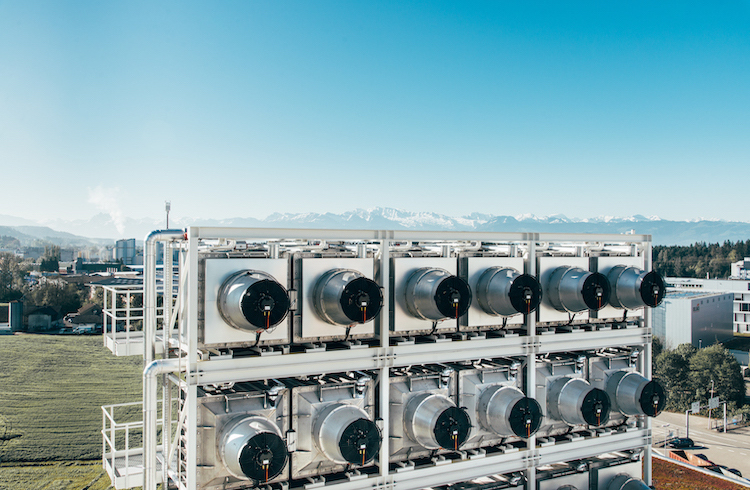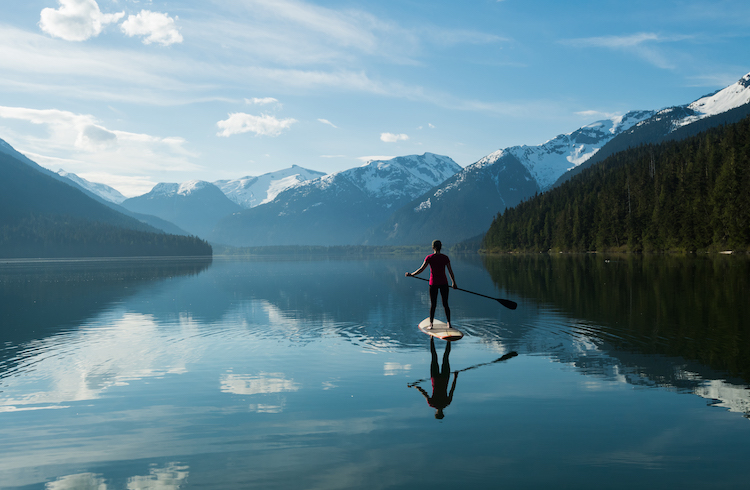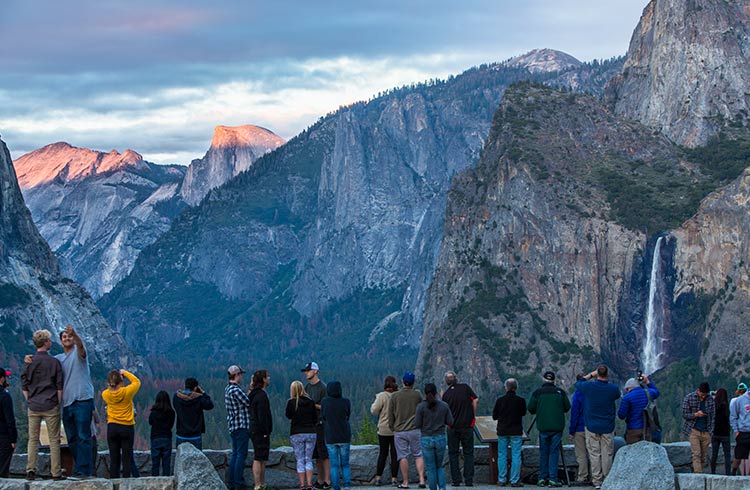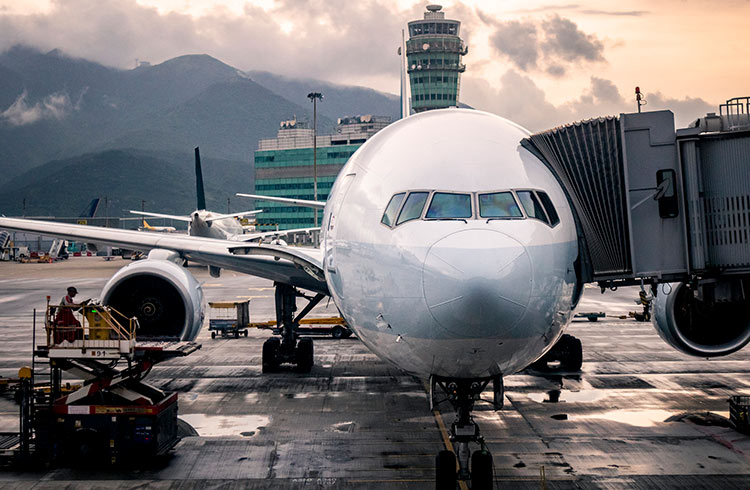How Capturing Carbon Can Reduce Your Travel Footprint
Tomorrow's Air Co-founder Christina Beckmann explains her vision to speed up the removal of carbon from the atmosphere through a community of like-minded travelers.
 Photo © Climeworks/Julia Dunlop
Photo © Climeworks/Julia Dunlop
Christina Beckmann and Nim de Swardt founded Tomorrow's Air in 2019, after a life-changing trip to Antarctica with Sir Robert Swan OBE (the first person to walk to both the North and South Poles). While experiencing the fresh air in this remote place, they also witnessed the decay caused by climate change and saw an opportunity to instigate change for the better of everyone.
Incubated by the Adventure Travel Trade Association, Tomorrow's Air partnered with direct air capture provider Climeworks, to fulfill a vision for fresh air and a stable climate for everyone. Christina Beckmann explains what Tomorrow's Air is doing and how travelers can help.
What inspired you to found Tomorrow’s Air?
For years, I'd been working in sustainable travel, recognizing all the benefits tourism can bring to conservation efforts and local communities. But in Antarctica, I viscerally grasped, as I had not in the past, the truth of the matter around carbon stored in our atmosphere. That even if we reduced emissions to zero instantly, that we had trillions of tons of CO2 stored in the atmosphere to deal with. That trip connected me with information and expertise, and creative inspiration and a new network of people – Nim de Swardt and I met on that trip, along with David Hone, Fraser Morton, people we are part of Tomorrow's Air today.
What is Tomorrow's Air purpose?
Tomorrow’s Air was born to consolidate the massive, distributed power of global travel to clean up the excess carbon disrupting all life in order to keep the joys of exploring our world available into the future.
What is the difference between carbon removal and offsetting?
Terminology has been all over the place which has confused people. Instead of presenting these two things as in opposition to each other, I would simply explain that carbon removal can be natural or technological. Carbon removal means capturing carbon dioxide (CO2) from the atmosphere and locking it away for decades or centuries in plants, soils, oceans, rocks, saline aquifers, depleted oil wells, or long-lived products such as cement. Nature absorbs carbon dioxide – think of trees, for example – and there are also technological approaches to absorbing carbon dioxide. Technological approaches are often referred to as “negative emissions technologies”.
Commonly 'offsets' mean paying someone else to not emit, e.g. avoiding emissions, or, paying for the conservation of a natural solution for absorbing carbon from the atmosphere, such as forests because these are the most common types of offsets. Carbon removal has come to be used often as a shorthand for negative emissions technologies, but that's not really correct, as 'removal' can be nature or tech; carbon removal technologies work in combination with conventional carbon offsetting approaches.
Why is conventional carbon offsetting not enough?
Because, basically, we're out of time. This goes back to the lifecycle of carbon dioxide in the atmosphere. CO2 lives in our atmosphere for generations, it persists longer than our natural systems can capture and store it for us.
So, in order to meet the goals of the Paris Agreement, we need to not only reduce emissions but also quickly scrub them from the atmosphere. Studies suggest that by 2030 as much as 6 gigatons of carbon emissions need to be captured and permanently stored each year. The Intergovernmental Panel on Climate Change (IPCC) scenarios show that to stay even within less ambitious limits (2 degrees warming) we will need "gigaton-scale" carbon removal. Conventional offsets alone cannot achieve this.
We also live in a world in which some of storage – think forests – is now prone to go up in flames, releasing all the stored CO2. So, this is why no single solution alone is enough; we need natural solutions, and we need technological solutions.
What is direct air capture – how does it work?
Direct air capture is a carbon removal technology. Carbon collectors capture carbon dioxide from ambient air. Air is drawn into the collector with a fan and adheres to a filter within the collector. Once the filter is saturated, the collector is closed, and the temperature is increased, releasing pure CO2 which can then be mineralized or used in other products.
Can travelers visit the direct air capture facility?
Climeworks, our carbon removal partner, has a demonstration plant in Hinwil, Switzerland [see main image, above], that although it is not open to the public, can be toured on occasion by special appointment. We have an Airbnb online experience in which travelers can tour the facility. In this online experience, visitors earn about how the carbon collectors work, and follow with Anna Ahn, my co-host, as she climbs up to the upper deck of the collectors and shows in close detail how they operate. Due to COVID-19 restrictions, we are not currently able to schedule new tours but anyone can join the waitlist by emailing me.

What is our responsibility as travelers to travel responsibly as we recover from COVID-19?
Travelers can be thinking more about how and with whom they're spending their money when they travel. Try to buy locally in all aspects, recognize that when you visit a place, you're a guest, and be as respectful as you would be as a guest in someone's home. I feel there is a lot of encouragement from the travel industry for responsible travel, showcasing the ways in which travel can be damaging, which is important to recognize. At the same time, I hope people feel that they can still have fun when they travel. It turns out that following the basic principles of responsible travel makes travel more memorable and fun while delivering greater benefits to local people and environments.
How can travelers track their carbon footprint and be part of sustainable solutions?
Travelers can use tools such as this one from Sustainable Travel International to calculate their carbon footprint when they travel. Travelers can also travel longer and slower, use sustainable booking tools, fly with airlines that use renewable fuels, fly like a NERD (fly Newer aircraft, fly Economy, choose Regular sized aircraft, fly Direct) and support businesses that share your values around climate and travel.
Carbon removal through Tomorrow's Air is helping us move quickly to pull carbon from the atmosphere that's stored there and will keep warming our world until we pull it out. Offsetting an upcoming trip is great, AND we still have to band together to tackle the trillions of tons of stored emissions. So, tracking your carbon footprint is smart and good but I encourage people to recognize that it's not just about the footprint of your trip today and the emissions in that calculator, it’s also about helping scale up technologies that can help us address all those past emissions too. A very sustainable solution is to join Tomorrow's Air – for a flat fee of $10, $28 or $75 a month, you can help grow the global community of people supporting the scale-up of carbon removal with permanent storage.
What ethical issues can you envisage as the world opens up?
I think we'll see more people favoring wilderness and rural experiences, and this will put strain – it already has – on places that are not accustomed to many visitors. People will ask, "is it ethical to travel given the climate impacts?" I think we will see more people also examining the sustainability aspects of travel. Travel does an incredible amount of good in the world though – think of the money for local communities, the money that funds conservation and protected areas management that is drawn from tourism. We need travel in our economy, and we can take this moment to get aggressive about how we work towards a vision of carbon-free travel.
What’s the future for responsible travel?
We will see sustainable and responsible travel tools and practices more embedded into the travel products people buy. Right now, we're encouraging travelers to ask service providers about their sustainability practices and to push providers to evolve their operations to be more sustainable.
What’s next for Tomorrow’s Air?
We're continuing to build our community, bringing more travelers along with travel businesses into the collective. Our Artists for Air program continues to expand and we're looking at some very creative activations from this group in the coming months. I'm also really interested to add new and interesting benefits providers into our mix. As travel rebounds, we're talking with a number of travel companies who will be more in a position to offer benefits.
Related articles
Simple and flexible travel insurance
You can buy at home or while traveling, and claim online from anywhere in the world. With 150+ adventure activities covered and 24/7 emergency assistance.
Get a quote


No Comments